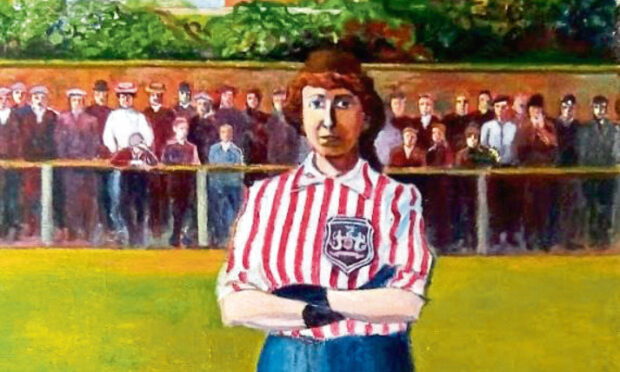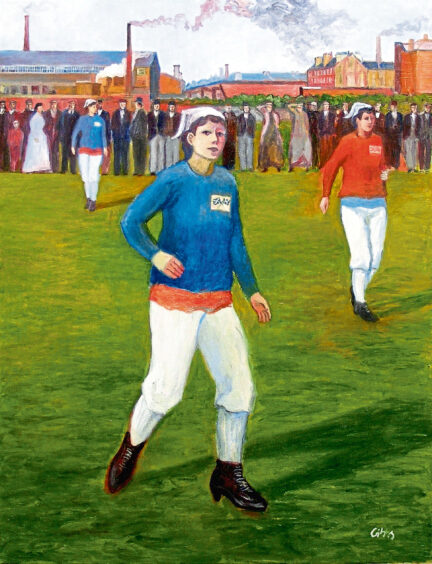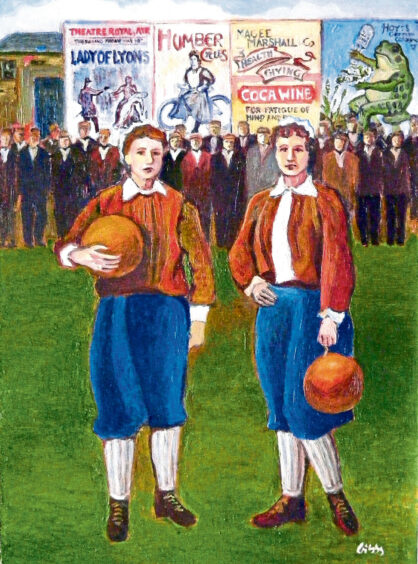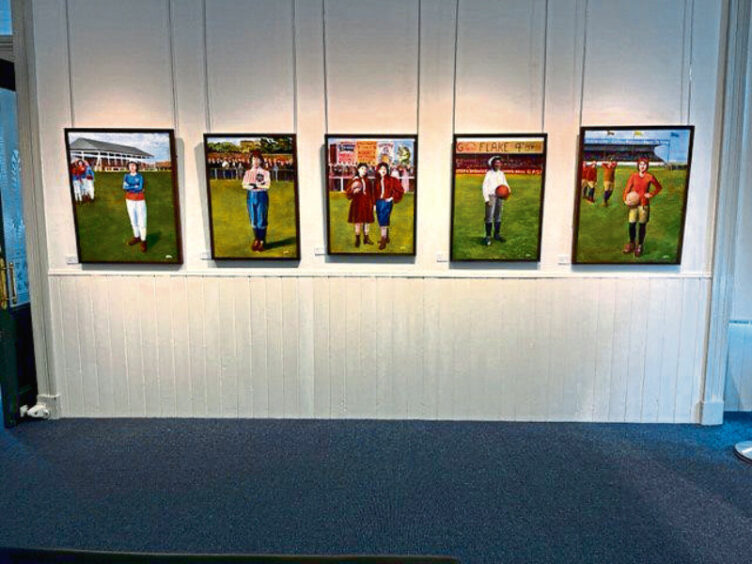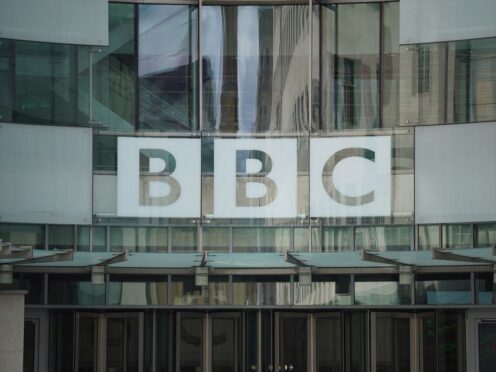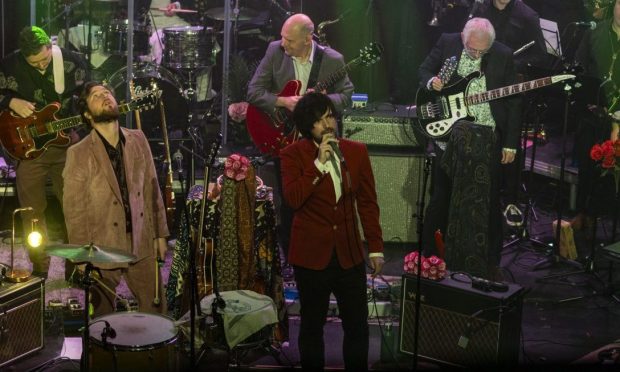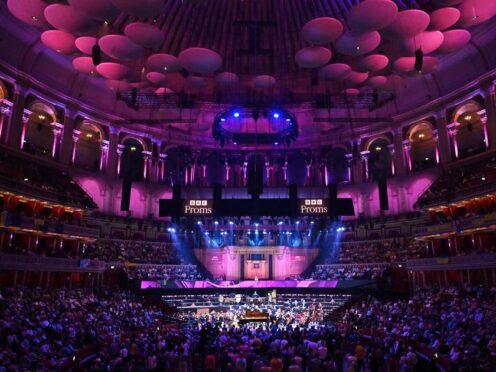As excitement builds for the future of women’s football, a new exhibition at Montrose Museum and Art Gallery charts the story of the sport – from the very first association match in 1881 to mainstream acceptance with Euro and World Cup qualifications for Scotland.
Featuring art works by Glasgow-based artist and historian Stuart Gibbs, together with objects and information capturing the stories behind players through history, Game for Girls gives visitors an insight into one of the fastest growing sports around.
It charts the history of women’s football and highlights the key female figures whose passion for the sport enabled players to overcome discrimination, sexism and even a ban on female participation in the sport.
Although football was played in the 16th Century, the first mention of women playing football in Scotland comes from the 1628 parish records of Carstairs in Lanarkshire.
A match between the ladies of Lennel and Coldstream was held on Ash Wednesday in 1786, and a long-standing fixture is recorded in the Statistical Accounts of Scotland from 1795.
Even the aristocracy joined in during this period. Mary Nesbit, also known as Lady Elgin, noted playing football in the grounds of Lord Portmore’s estate within her teenage diary of the 1790s.
However, throughout the Victorian period women’s football was presented as a novelty event. The first association match featuring women was organised by the Edinburgh-born theatre promoter, Alex Gordon in 1881, followed by a series of Scotland versus England matches in the same year.
A ‘Football Ballet’ followed in 1887, performed at the Gaiety theatre in Glasgow.
Stuart Gibbs developed the exhibition in partnership with Dumfries and Galloway Council Museum Service and the Scottish Football Museum.
Graduating from Glasgow School of Art in 1989, Stuart has held many group and solo exhibitions across the UK since.
Montrose Museum’s visitor advisor Emma Longmuir said: “The exhibition features Helen Matthew (aka Mrs Graham) who claimed to be Scottish. Although her birth was registered in London in 1871, her father was a ship’s captain from Montrose.
“Helen contributed to the ‘Lothian Lasses’ football column and played for the British Ladies Football Club where she took part in tours. In 1896 she toured the North of England and Scotland with Mrs Graham’s XL, an offshoot of the British Ladies.
“With women’s football rising in popularity, we hope this exhibition shines a light on the legacy of the sport in Scotland and encourages more girls and women to get involved.”
- The free exhibition can be viewed Tuesday to Saturday 10am to 4pm until September 24.
- Stuart will deliver a talk on July 21 at 1.30pm. angusalive.scot/
